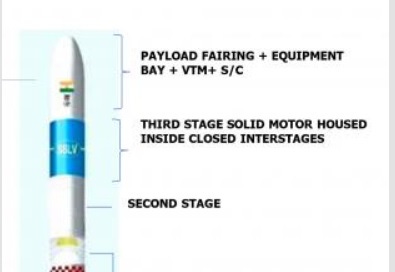In the interview with journalist, Pallava Bagla, ISRO Chairman, S Somnath said that seeing rockets soar in the sky raises their spirit.
The last two weeks have similarly raised the spirits of the Indian space enthusiast. It is not always that you see a new launch vehicle take shape before you. SLV-3 was first launched six years before my birth. I was an infant when work took place on the Augmented Satellite Launch Vehicle (ASLV). I was too young when the Polar Satellite Launch Vehicle (PSLV) was operationalized.
I felt the pain of seeing one GSLV after another falling into the Bay of Bengal as ISRO scientists were getting a grip on cryogenic engines and various aspects of flight. I feel especially attached to the GSLV. Although there were successes in the middle, the period felt gloomy for me. But, that experience helped ISRO with the faster operationalization of the Geosynchronous Satellite Launch Vehicle Mark-III (GSLV Mk-III).
The GSLV Mk III and the Small Satellite Launch Vehicle (SSLV) are two ends of a spectrum that ISRO has. The GSLV Mk-III can put a satellite weighing 8000 kg to an orbit at an altitude of 600 km. The SSLV can put a satellite weighing 500 kg to an orbit of 400 km.
Image: The three-stage Small Satellite Launch Vehicle (SSLV). [Source]
The highlight this week was the successful testing of the SSLV first stage solid motor, called the SS-1.
The launch vehicle can carry single or multiple, nano, micro or small satellites that weigh 500 kg into a 500 km planar orbit. The launch vehicle has three solid-fuel stages. On the top, there is a Velocity Trimming Module which is a liquid-fuel thruster that will be used to place the satellite in it’s required orbit.
A report in the Indian Express said that the launch vehicle could cost about INR 30 crores (USD 4 million). The report says that a crew of 6 people would be able to stack the rocket and add the satellite in 7 days!
ISRO relies greatly on solid fuel rocket motors. Each launch vehicle that ISRO has developed uses solid fuel rocket motors. But, this particular fuel is used particularly on the PSLV. The SSLV has three chemically-similar motor stages. Each provides different thrusts to the payload enroute to orbit.
The fourth stage of the PSLV and the velocity trimming module (VTM) on the top of the SSLV are similar. The fourth stage of the PSLV has two liquid fuel engines generating a thrust of 14,800 N. The eight liquid fuel engines on the SSLV VTM produce a thrust of 400 N.
The fourth stage of the PSLV uses six 50 N RCS to point the rocket in the right direction, the SSLV uses eight 50 N engines to do the same.
The SS-1 was a new design. Hence, it was to be tested twice. First, it has to prove it’s performance. It has to perform once again for acceptance for launch.
The first test of the stage was done on March 18, 2021. This test failed. While the test was for 110 seconds, the stage started shaking after 60 seconds. At 95 seconds, the nozzle broke. The failure report was not made public.
The second test of the stage was done on March 14, 2022. This time it is not known how long the stage was to be tested for. Only, a statement saying that the stage is ready for flight in May 2022. I hope a second ground test is done for acceptance, as was originally planned.
Updates from ISRO
YUVIKA - YUva VIgyani KAryakram (Young Scientist Programme) - Last date of registration is April 10, 2022.
ISRO Academia Day 2022 - See the various possible research areas in the various centers of ISRO. Held on March 14, 2022.
Satish Dhawan Centre For Space Sciences Inaugurated at CUJ, Jammu
A crater on Mars has been named after Kalpathy Ramakrishna Ramanathan. He was the Physical Research Laboratory’s first Director.
The Indian Planetary Science Conference 2022 is in progress from March 14-16, 2022. You can download and read the Volume of Abstracts.


